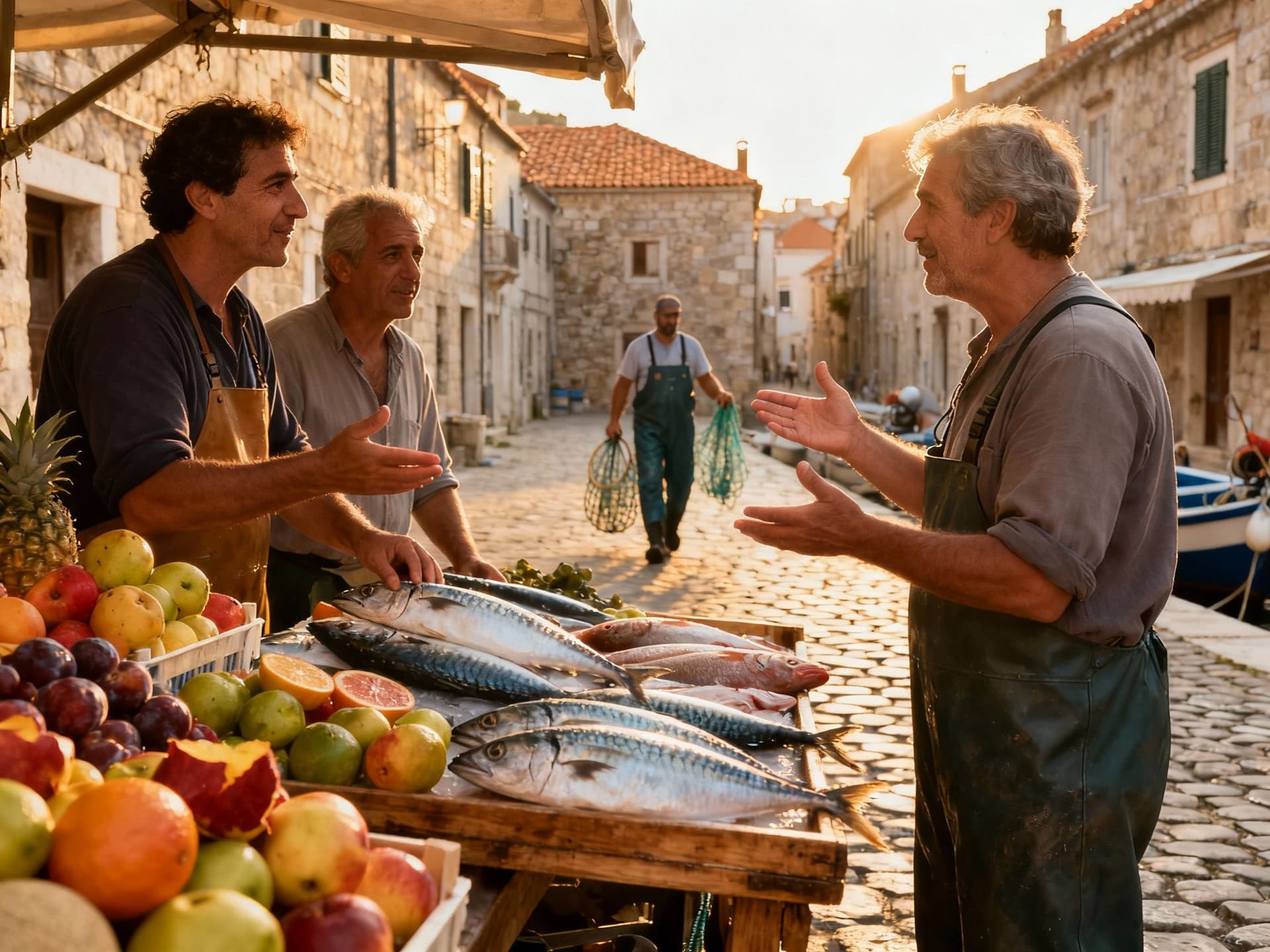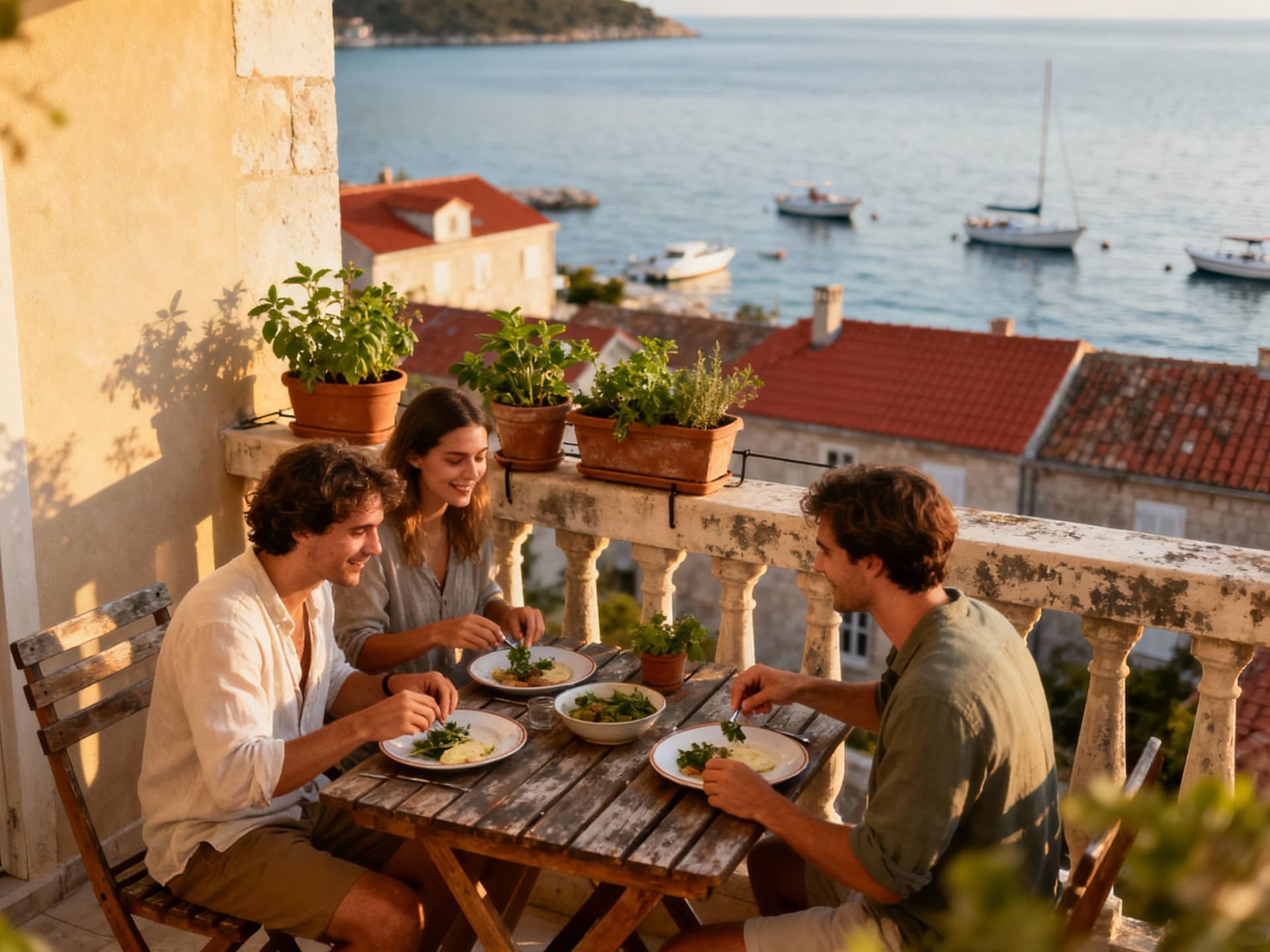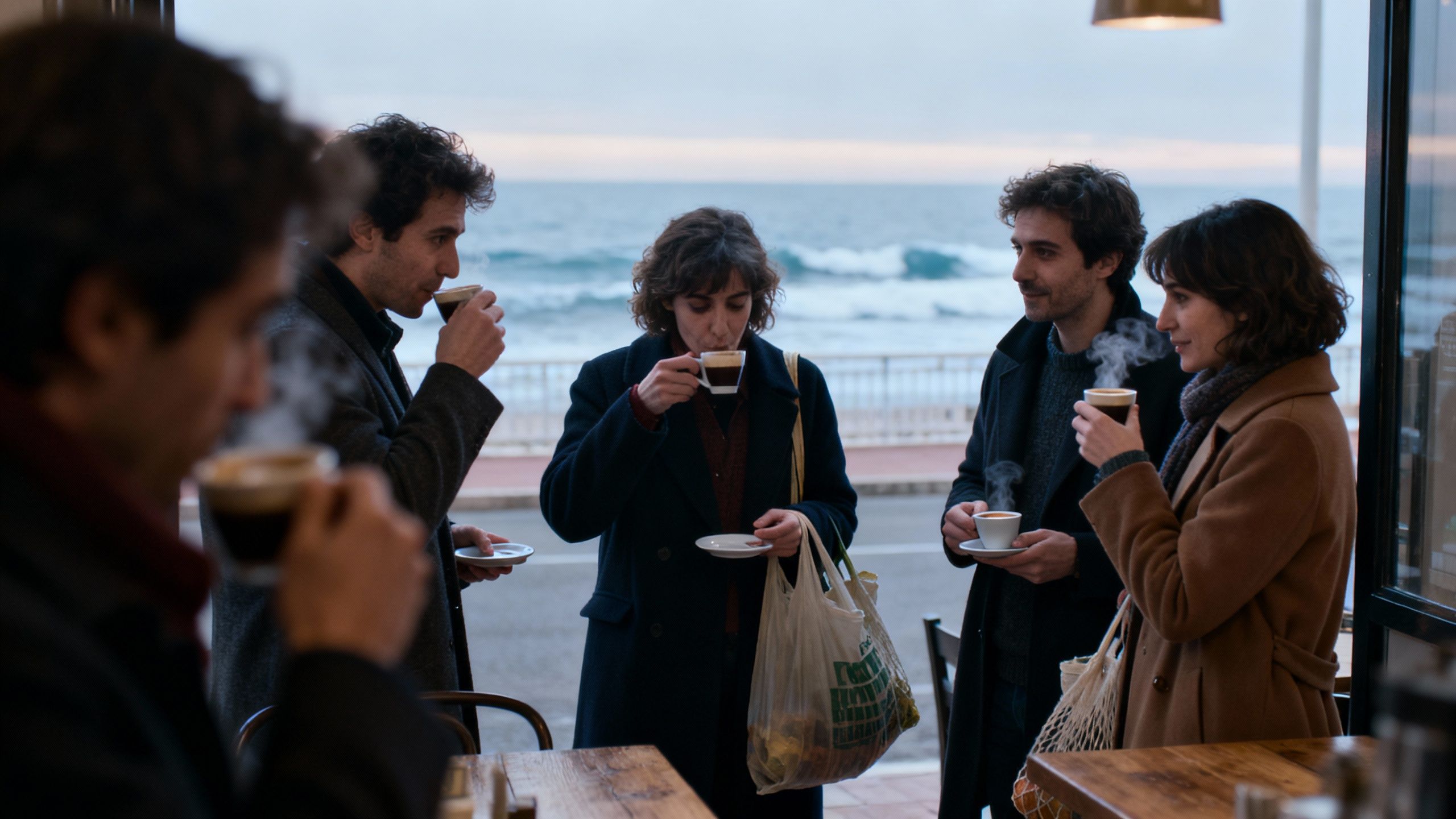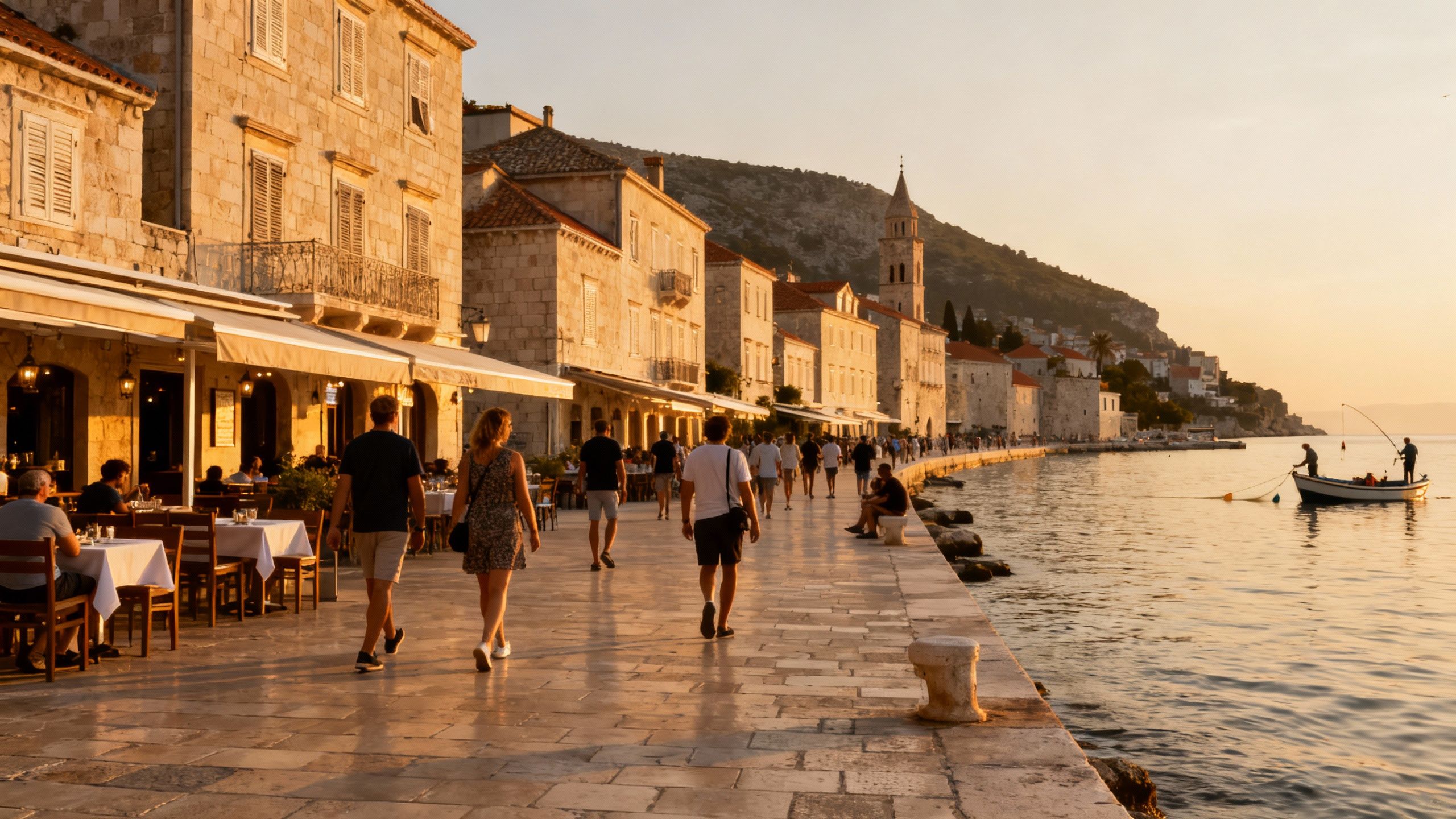Croatia: Buy the Life, Then Verify the Market
Croatia’s coastal charm hides concentrated demand and policy change; pair sensory, weekday checks with official indices and registry verification to buy a life, not a summer asset.
Imagine stepping out at dawn in Split’s Voćni trg for a black coffee, then wandering a stone street to the fish market as fishermen sort the catch. That everyday intimacy — market sellers, late‑afternoon swims, neighbors who know your name — is what draws buyers to Croatia. But the same coastal charm concentrates demand, and that clustering creates transparency gaps international buyers must understand. We start with the life you want, then show the real market signals behind it.
Living Croatian Life: rhythms, streets and seasons

Croatia’s daily rhythm shifts with the seasons. Summers are loud and outward — terraces, ferries, festivals and packed promenades in places like Dubrovnik’s Stradun or Hvar’s harbour. Winters are quieter and local: bakeries hum in Zagreb’s Maksimir, neighbourhood squares refill with residents, and coastal towns breathe differently. For an international buyer, this means assessing a property not just by price but by how the place functions year‑round.
Split, Dubrovnik and Istria: similar coastlines, different lives
Split offers a working‑city feel where daily life mixes with tourism — cafés on Marmontova, grocery runs in Pazar, kids playing near Diocletian’s Palace. Dubrovnik is seasonal and prestige‑loaded; the old town is exceptional but tightly regulated and expensive. Istria (Rovinj, Poreč) trades mass tourism for year‑round food and wine culture, with inland hill towns that hum beyond July and August. Each area needs a separate transparency test: registry checks, utility maps and a clear sense of who actually uses the property outside summer.
Food, markets and micro‑neighbourhoods that tell the truth
A Saturday at Dolac (Zagreb) or the morning fish market by Split’s Riva shows you whether a neighbourhood breathes with locals or is engineered for visitors. Recent tourism figures show growing pre‑ and post‑season travel, which blurs the old summer/off‑season divide and changes how neighbourhoods earn income. That makes street‑level observation (markets, bakeries, weekday footfall) invaluable when judging whether a property will feel like a home or a tourist asset.
- Weekly lifestyle checks: key local signals
- Morning market activity (names of stalls, repeat customers)
- Local cafés open before 9am and neighbourhood bakeries with queues
- Weekday footfall on main streets (not just weekend tourist density)
- Presence of year‑round services: pharmacy, primary school, municipal office
Making the move: practical, transparency‑first checks

Lifestyle attraction is necessary but not sufficient. Prices across Croatia have risen sharply — official indices recorded strong year‑on‑year gains — and recent policy proposals to tax empty or short‑term rental properties change the cash flow picture for seaside homes. Before making an offer, combine official price indices with on‑the‑ground verification of daily life and a clear read on local tax treatment.
Property types and what they actually deliver
Stone houses on islands sell a romantic story but often come with infrastructure limits — water, insurance, and restoration rules. New apartments in Zagreb or Split give easier management and predictable running costs. When you prioritise lifestyle, map the everyday: can you source groceries, health care and maintenance staff outside summer? The property’s usable life is measured in those routines, not just in sea views.
How a local advisor preserves the lifestyle you want
A confident local agent does three things: verifies title and servitudes at the land registry; translates how seasonality affects real running costs; and shows you the weekday life around a property. Demand agents who show municipal plans, utility maps and recent energy bills. Ask them to walk you through the same street at 09:00, 14:00 and 19:00 so you can judge rhythm, not sales choreography.
- A short, practical due‑diligence sequence
- 1) Confirm registry title and encumbrances with a notarised extract; 2) examine short‑term rental patterns and municipal rules; 3) request recent utility and maintenance invoices; 4) seek independent cost estimates for renovation and insurance; 5) verify weekday neighbourhood life in person or via local contacts.
Insider knowledge: what expats wish they’d known
Expats often speak of two surprises: (1) how quiet many coastal towns become outside summer, and (2) how much local community life determines happiness. Tourism data show Croatia extending its shoulder seasons, which softens extremes, but the lived experience still differs by town. Buyers who integrate with local rhythms keep properties in use and avoid the empty‑house pitfalls that policy makers are now targeting.
Cultural and social small print
Learn a few phrases, show up at local events, and accept slower municipal responses. These small cultural investments pay off: neighbours help with tradesmen, and local trust reduces friction in repairs and rentals. Where you buy determines how easily you build a network — a café in Zadar or bakery in Pula is as important as broadband speed.
Longer‑term questions that change what to buy
Watch three signals: official price indices that show regional divergence; policy moves that target empty or short‑term lets; and local infrastructure plans that enable year‑round life. These factors determine whether you buy for steady capital growth, seasonal rental yield, or genuinely living there. Aim for clarity on each before signing.
- Key transparency red flags to halt an offer
- Seller refuses notarised land registry extract or delays title checks
- No clear utility connection maps or historic maintenance invoices
- Discrepancy between weekday and weekend neighbourhood life
- Unclear local rules on short‑term letting or planned zoning changes
Conclusion: buy the life you visited and verify the market you’ll live in. Croatia rewards those who match sensory due diligence — morning markets, weekday walks, municipal plans — with durable neighbourhood life and sensible capital prospects. Work with advisors who prioritise transparency: legal extracts, utility proofs and local weekday checks. If you want help turning a market visit into a verified purchase plan, start with a single full‑day local audit of the street where you’d live.
Swedish expat who moved from Stockholm to Marbella in 2018. Specializes in cross-border legal navigation and residency considerations for Scandinavian buyers.


